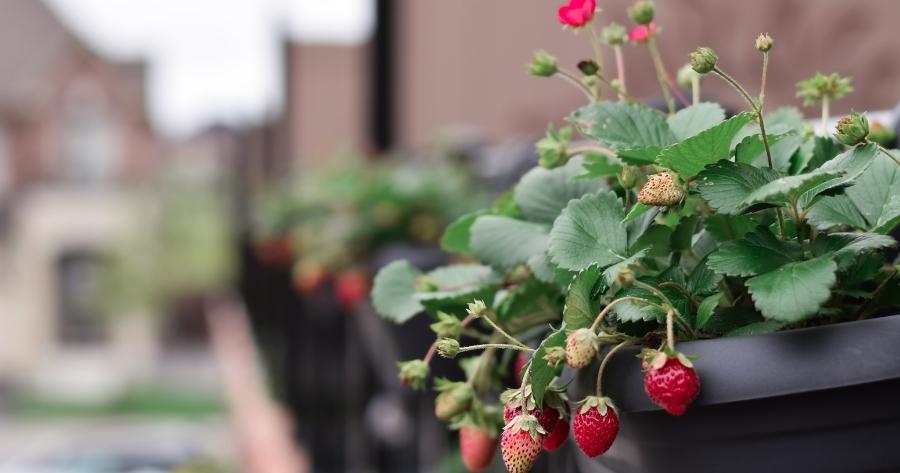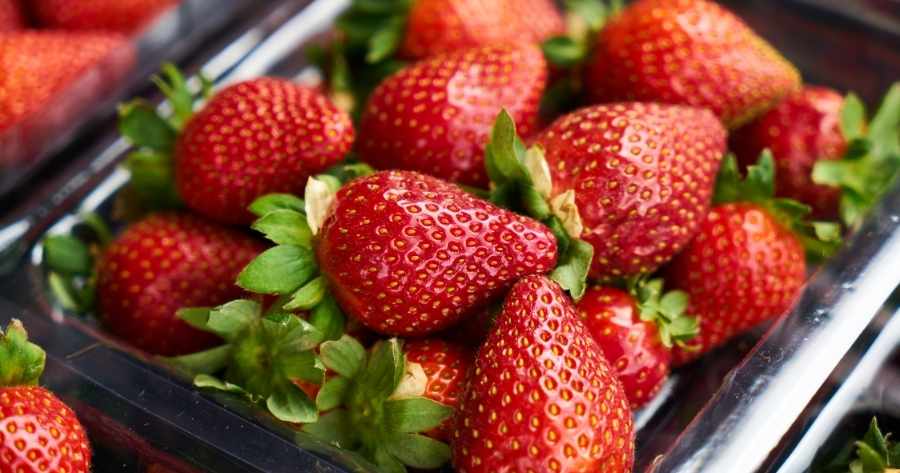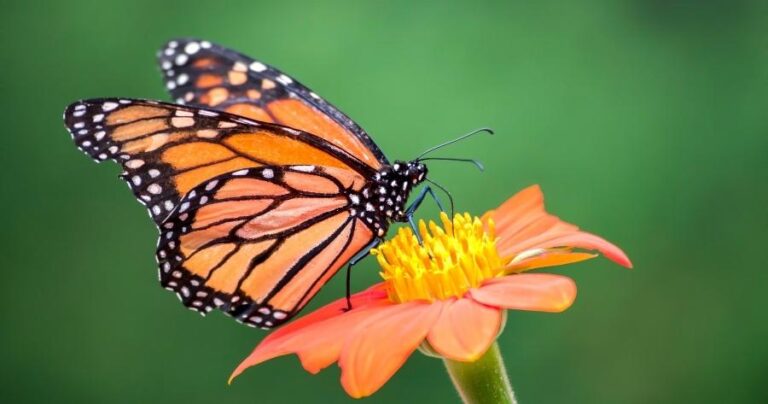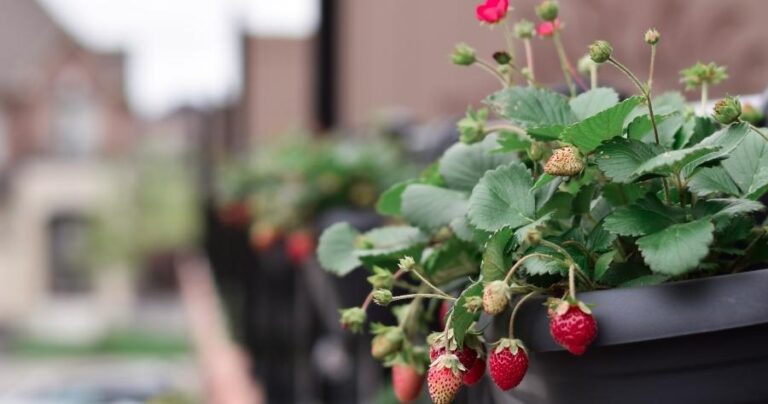
How To Grow Strawberries In Containers In 2025
Strawberries are among the most beloved fruits on the planet; sweet, juicy, and packed with nutrients that make them both delicious and incredibly healthy. In 2025, as more people shift toward sustainable living and self-sufficiency, container gardening has become one of the most practical ways to grow fresh produce at home. With rising food prices and growing concerns about pesticide use, growing your own strawberries is not just a rewarding hobby, it’s a smart and sustainable choice.
In the past, many gardeners believed strawberries required large garden beds and plenty of ground space to thrive. But today, thanks to advancements in container design, soil technology, and compact plant varieties, even those living in small apartments or homes with limited outdoor space can grow thriving strawberry plants. Whether you have a sunny balcony, a rooftop garden, or just a small windowsill with good light, you can still enjoy an abundant harvest of juicy berries all season long.
Growing strawberries in containers offers flexibility and control that traditional gardening often can’t. You can easily move your containers to follow the sun, protect plants from pests, or bring them indoors during harsh weather. You also have full control over the soil quality, water levels, and fertilizers used, ensuring a cleaner, healthier harvest compared to store-bought berries.
In 2025, container gardening has become more accessible and technologically advanced. Self-watering pots, organic soil enhancers, and smart gardening apps have made it possible for anyone, from beginners to experts, to successfully grow strawberries without needing acres of land or complex equipment. It’s a perfect blend of nature and innovation, giving you fresh, flavorful berries right at your fingertips.
This comprehensive guide will take you through every step of the process: from choosing the right strawberry varieties and preparing the perfect soil mix to mastering watering schedules, pollination, and pest control. Whether you’re looking to grow a few plants for personal enjoyment or create a small-scale strawberry oasis, this guide will provide everything you need to achieve a lush, productive container garden.
By the end of this detailed tutorial, you’ll not only know how to grow strawberries in containers successfully, you’ll understand how to maintain them, multiply them, and enjoy their sweet rewards season after season. Growing strawberries in containers in 2025 isn’t just about gardening; it’s about embracing a modern, sustainable lifestyle that brings freshness, beauty, and satisfaction right into your home.

Growing Strawberries In Containers In 2025
Growing strawberries in containers offers flexibility, control, and convenience that traditional ground gardening cannot match. In 2025, with more people living in urban environments, container gardening has evolved into a practical and sustainable lifestyle trend.
Here are a few key reasons to grow strawberries in containers this year:
- Space Efficiency: Perfect for balconies, patios, or rooftops. You don’t need a big yard to grow food anymore.
- Mobility: Containers can be moved to catch sunlight, protect from frost, or control exposure during extreme weather.
- Pest Management: Growing strawberries off the ground reduces the risk of pests like slugs, snails, and soil-borne diseases.
- Control Over Growing Conditions: You can easily manage soil quality, moisture levels, and fertilizer application.
- Extended Growing Seasons: Portable containers make it easy to bring plants indoors during cold months or to use grow lights.
In 2025, with improved self-watering pots, eco-friendly grow bags, and lightweight planters, growing strawberries is no longer a task limited to experienced gardeners, it’s for everyone.
Choosing The Right Strawberry Variety For Containers
Selecting the appropriate strawberry variety is crucial to your success. Some varieties perform better in containers due to their growth habit, yield pattern, and adaptability.
There are three main types of strawberries:
a. June-bearing Strawberries
These produce one large crop per year, usually in late spring or early summer. They are known for their large, juicy fruits. While they require more patience, they yield heavily. Popular varieties for containers include:
- ‘Earliglow’
- ‘Honeoye’
- ‘Allstar’
b. Ever-bearing Strawberries
They yield two to three smaller harvests per year; one in spring, one in summer, and possibly one in early fall. Perfect for steady production throughout the season. Great choices include:
- ‘Ozark Beauty’
- ‘Quinault’
- ‘Seascape’
c. Day-neutral Strawberries
These varieties produce fruit continuously as long as temperatures remain between 35°F and 85°F (1°C–29°C). This makes them ideal for container growing in 2025, especially in mild or controlled environments. Top choices include:
- ‘Albion’
- ‘Evie 2’
- ‘Mara des Bois’
For beginners, day-neutral varieties are the best option, they produce fruit nearly year-round and adapt well to containers and indoor lighting setups.
Selecting The Best Containers For Strawberries
Container choice can make or break your strawberry project. In 2025, there are more innovative designs than ever, from vertical towers to self-watering pots.
a. Material Options
- Plastic pots: Lightweight, affordable, and good at retaining moisture.
- Terracotta pots: Great for breathability but dry out faster; ideal for humid regions.
- Fabric grow bags: Promote excellent root aeration and drainage.
- Vertical towers or stackable planters: Save space while allowing multiple plants to grow in tiers.
b. Size Recommendations
Each strawberry plant needs at least 12–14 inches (30–35 cm) of space to spread its roots. Containers should have:
- A minimum depth of 8 inches (20 cm)
- Drainage holes to prevent waterlogging
c. Modern Innovations
Self-watering planters are a big trend in 2025. They regulate soil moisture automatically, reducing the need for daily watering, perfect for busy urban gardeners.
Choose light-colored containers to prevent root overheating if you live in a hot climate.
Preparing The Ideal Soil Mix
Strawberries thrive in rich, well-drained soil. In containers, you have full control over the soil composition.
a. Ideal Soil Properties
- pH Level: Slightly acidic (5.5–6.5)
- Texture: Loose and crumbly to allow root aeration
- Nutrient-rich: Should contain organic matter to support fruit production
b. Recommended Soil Mix (per 10 liters of soil):
- 50% high-quality potting mix
- 25% compost or well-rotted manure
- 20% coco coir or peat moss for water retention
- 5% perlite or coarse sand for drainage
c. Modern Additives in 2025
New organic amendments like biochar, worm castings, and microbial inoculants help boost soil fertility and improve root health naturally.
Avoid garden soil, it compacts in containers and can harbor pests or diseases.
Planting Strawberries In Containers
Planting correctly ensures healthy root development and vigorous growth.
a. When to Plant
For most regions, spring remains the best time to plant strawberries. However, with indoor growing setups and LED lighting, you can start any time of the year.
b. How to Plant
- Fill your container with prepared soil mix, leaving about 2 inches (5 cm) from the top.
- Make a small hole and spread the strawberry roots evenly.
- Place the crown (where roots meet the leaves) just above the soil surface; burying it too deep can cause rot.
- Water thoroughly after planting.
c. Spacing
Allow 10–12 inches (25–30 cm) between plants if using larger containers or planters. Overcrowding limits air circulation and increases disease risk.
Sunlight And Temperature Requirements
Strawberries need plenty of sunlight to produce sweet, flavorful fruits.
a. Sunlight Needs
- 6–8 hours of direct sunlight daily is ideal.
- For shaded balconies, use reflective surfaces or grow lights.
b. Artificial Light Options (for 2025 Indoor Growers)
Modern full-spectrum LED grow lights mimic natural sunlight efficiently. Position lights about 12–16 inches (30–40 cm) above the plants and run them for 12–14 hours daily.
c. Temperature Range
- Optimal growth: 60°F–80°F (15°C–27°C)
- Avoid frost exposure unless you have protection covers or indoor setups.
Use smart temperature sensors or gardening apps that monitor light exposure and send watering reminders, many are readily available in 2025.
Watering And Moisture Management
Watering is one of the most critical aspects of container gardening.
a. Frequency
Strawberries prefer consistently moist but not soggy soil. Water:
- Every 1–2 days during hot weather
- Every 3–4 days in cooler seasons
b. Methods
- Use a watering can with a fine spout to avoid washing away soil.
- Self-watering containers are a great investment for uniform moisture control.
c. Signs of Improper Watering
- Yellow leaves = Overwatering
- Wilting or dry edges = Underwatering
Mulching with straw, pine needles, or coco chips helps retain moisture and prevent soil splashing on fruits.
Fertilizing For Maximum Yield
Strawberries are heavy feeders, especially in containers where nutrients leach quickly.
a. Fertilizer Schedule
- Pre-planting: Mix compost or slow-release organic fertilizer into the soil.
- During growth: Apply a balanced (10-10-10) fertilizer every 2–3 weeks.
- During fruiting: Switch to a fertilizer higher in potassium (e.g., 5-10-10) for sweeter fruits.
b. Organic Fertilizer Options
- Liquid seaweed
- Fish emulsion
- Compost tea
- Worm castings extract
c. Smart Fertilizing Tools (2025 Trend)
Many gardeners now use app-controlled drip systems that deliver nutrients automatically based on plant growth stages.
Pollination And Flowering Tips
Even though strawberries are self-pollinating, container plants sometimes need assistance for better fruit set.
a. Natural Pollination
Place your containers outdoors during flowering to allow bees and other pollinators access.
b. Hand Pollination
Use a small paintbrush or cotton swab to gently transfer pollen between flowers every few days.
c. Encouraging More Flowers
Pinch off early flowers for the first 2–3 weeks after planting to allow plants to establish strong roots. This leads to heavier fruiting later.
Managing Runners (Stolons)
Runners are the long stems that grow from strawberry plants to produce baby plants.
a. What to Do with Runners
- For more fruit: Trim runners early to redirect energy toward fruiting.
- For propagation: Peg runners into a separate pot to grow new plants.
b. When to Trim
Cut runners when they’re about 6–8 inches long and have small leaves forming.
Use trimmed runners to expand your strawberry garden each season without buying new plants.
Pest And Disease Control
Container-grown strawberries are less prone to pests, but problems can still arise.
Common Pests
- Aphids: Suck plant sap; use neem oil spray.
- Spider mites: Appear in hot, dry conditions; spray with insecticidal soap.
- Slugs/Snails: Place copper tape around pots to deter them.
Common Diseases
- Gray mold (Botrytis): Avoid overhead watering and ensure good air circulation.
- Powdery mildew: Use sulfur-based organic sprays.
- Root rot: Prevent by ensuring proper drainage.
Rotate container positions every few months and sterilize containers between seasons to prevent disease buildup.
Harvesting Strawberries
The best moment in strawberry growing is harvest time.
a. When to Harvest
Strawberries are ripe when they are fully red, shiny, and slightly soft. Typically, this occurs 4–6 weeks after flowering.
b. How to Harvest
- Pick in the morning when fruits are cool.
- Gently twist and pull the berry, leaving a small portion of the stem attached.
c. Post-Harvest Handling
- Do not wash until ready to eat.
- Store in the refrigerator for up to 3 days.
- Freeze excess harvest for smoothies or jams.
Extending The Growing Season
To keep your strawberries productive beyond the normal season:
a. Use Mini Greenhouses
Protect plants from frost and extend harvests into late fall or early winter.
b. Indoor Growing
Bring containers inside under LED grow lights when temperatures drop below 45°F (7°C).
c. Year-Round Fruiting Varieties
Day-neutral types like Albion or Seascape are excellent for all-season production with proper lighting.
Common Mistakes To Avoid
Even experienced gardeners make errors. Avoid these pitfalls:
- Overcrowding plants – Leads to poor airflow and disease.
- Using garden soil – It’s too heavy and may contain pathogens.
- Neglecting sunlight – Insufficient light leads to small, tasteless berries.
- Skipping runner pruning – Reduces fruit yield.
- Over-fertilizing – Causes excessive leaf growth instead of fruiting.
Advanced Container Gardening Tips (2025 Trends)
Modern gardening combines technology and sustainability.
- Smart sensors: Track moisture, temperature, and pH levels.
- Automated watering systems: Perfect for travelers or busy people.
- Eco containers: Made from recycled materials and biodegradable fibers.
- Vertical gardens: Use tower planters or hydroponic stacks for maximum yield in tight spaces.
- Organic pest barriers: Eco-friendly sprays made from essential oils or garlic-based solutions.
These innovations make container strawberry gardening both futuristic and simple.
Propagating Strawberries For Future Seasons
Instead of buying new plants every year, you can easily propagate your strawberries.
a. Using Runners
- Select healthy runners with small leaves.
- Place them in a small pot with moist soil while still attached to the mother plant.
- Once rooted, cut them off and grow separately.
b. Using Division
For mature plants, carefully separate crowns and replant them individually.
c. Storing Plants Over Winter
In cold regions, move pots to a sheltered area or bury them in mulch for insulation.
Eco-Friendly Strawberry Growing Practices
Sustainability is a major gardening theme in 2025.
- Use organic fertilizers and natural pest control methods.
- Recycle kitchen waste into compost.
- Collect rainwater for irrigation.
- Avoid single-use plastic pots, opt for biodegradable grow bags.
These small steps contribute to greener, more sustainable urban gardening.
Creative Ideas For Displaying Container Strawberries
Strawberries are not just delicious; they’re beautiful. Here are fun ways to showcase them:
- Hanging baskets: Let fruits cascade down attractively.
- Tiered planters: Add vertical beauty to patios.
- Wooden crates: Rustic and charming for farmhouse-style decor.
- Upcycled containers: Old buckets, barrels, or PVC pipes can be repurposed.
Troubleshooting: Common Problems And Solutions
| Problem | Likely Cause | Solution |
|---|---|---|
| Small fruits | Lack of nutrients or sunlight | Apply potassium-rich fertilizer, move to sunny area |
| Yellow leaves | Overwatering or poor drainage | Improve drainage, reduce watering |
| No fruits | Too much nitrogen | Use balanced fertilizer, prune runners |
| Rotting berries | Poor airflow, excessive moisture | Space plants, use mulch |
| Pests on leaves | Aphids or mites | Neem oil or insecticidal soap |
Conclusion
Growing strawberries in containers in 2025 is an exciting and attainable goal for anyone; whether you’re an experienced gardener or a first-time grower. With the right variety, soil mix, and care routine, you can enjoy a constant supply of sweet, homegrown berries even in the smallest of spaces.
The beauty of this method lies in its flexibility—your strawberry plants can thrive on a balcony, windowsill, or rooftop, adapting to modern lifestyles without sacrificing flavor or yield.
So, grab a few pots, some rich soil, and your favorite strawberry variety, and get ready to taste the fruits of your labor. In 2025, your homegrown strawberries aren’t just a hobby, they’re a symbol of sustainability, creativity, and the future of urban gardening.





